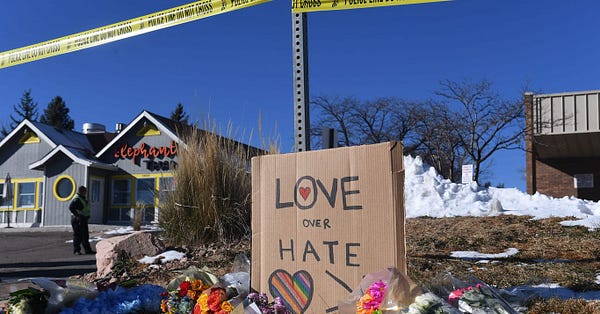Destabilized Saturday Edition #45
Climate change and inequality, Musk's radicalization, political press undeterred by failure, all sustainability is now disruptive, the perfect date
In their new book about the 2020 presidential election, The Bitter End, political scientists Lynn Vavreck and John Sides describe the current state of our politics as “calcified.” They mean that despite the historic events and societal upheaval of recent years, there has been little change from election to election in which party Americans vote for. They offer three reasons why:
The long-running transformation of the Democratic and Republican parties has made them both increasingly homogenous on ideology. Conservatives have become Republicans, liberals have become Democrats. (As perhaps you’ve heard.)
The two parties have grown further apart from each other on multiple dimensions, especially on the issues of identity and race that dominate contemporary politics. Because these issues are highly personal and emotional, people are less likely to change their minds.
The ability to win national political power is divided fairly equally between the two parties so neither has a strong incentive to shake things up.
I love it when I find that someone has articulated something I’ve intuited but not managed to express clearly. This is one of those cases.
The place my mind goes next is: will this continue, for how long, and what is likely to happen from there? I have some hypotheses burbling that I’m going to flesh out in 2023 after the updated voter files are released and we can know who actually voted. For now I’ll leave you with two charts, both from this Catalist analysis of the 2020 election, and a thought:
Chart 1:
Chart 2:
In combination, these charts say:
Younger voters (not just under 30, but mid-40s and below) are significantly more Democratic than older voters (mid-40s and up); and
These voters are becoming an ever larger proportion of the electorate every cycle.
Because elections, including the 2022 midterms, have remained closely contested, one thing we can say is that other factors have been offsetting the growing numerical prominence of these young, Democratic-leaning voters in the electorate. One of those factors has been the movement of blue collar white voters from Democrats to Republicans, a trend that spiked in 2016. There have been other factors, too, including conservative blue collar voters of color moving to the Republicans in the past two elections. Will these trends continue to keep pace with – or overtake – the millennial and zoomer influence in the electorate?
Stay tuned.
My Work
Climate change will dramatically worsen inequality (link)
Place will not be the only driver of unequal climate harms. The more time I spend reading and thinking about climate change the clearer it is that money, along with location, will be the critical dividing line. Most people and communities with enough money will be able to protect themselves from the worse climate impacts, while impoverished people and communities around the globe will be more exposed and have a more difficult time finding shelter from literal and figurative storms.
This is hardly an original insight, everyone from the UN to the Pope to the Trump Administration has noted that climate impacts will fall – and are already falling – disproportionately on the poor. But the insight is foundational and also has layers, so let’s dig into it and see what we find.
Interesting Reads
Elon Musk and the Narcissism/Radicalization Maelstrom (link)
It’s a fascinating thing to watch far-right radicalization unfold in real time. I’ve been watching the Elon Musk and Twitter drama with a mix of fascination and awe. He bought Twitter as part of his romance with the “free speech”/anti-“cancel culture” right and Donald Trump. Just what set him off on that path has never been adequately or convincingly explained, though there are a number of very plausible and not-mutually exclusive theories. Over the last four weeks Musk’s attachment to this crowd and that ideology have been constantly apparent. He gave an early and even for him startling taste of this when he tweeted out a rank gay-bashing conspiracy theory about the QAnon dead-ender’s hammer attack on Paul Pelosi days before the November 8th election. The process has only accelerated and intensified over the subsequent four weeks.
Tweets of the Week









Extreme Weather Watch

Creeping Fascism Watch



















